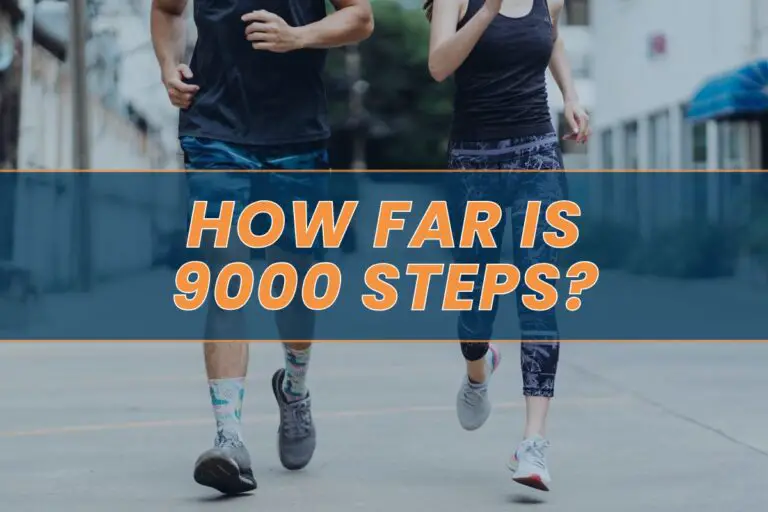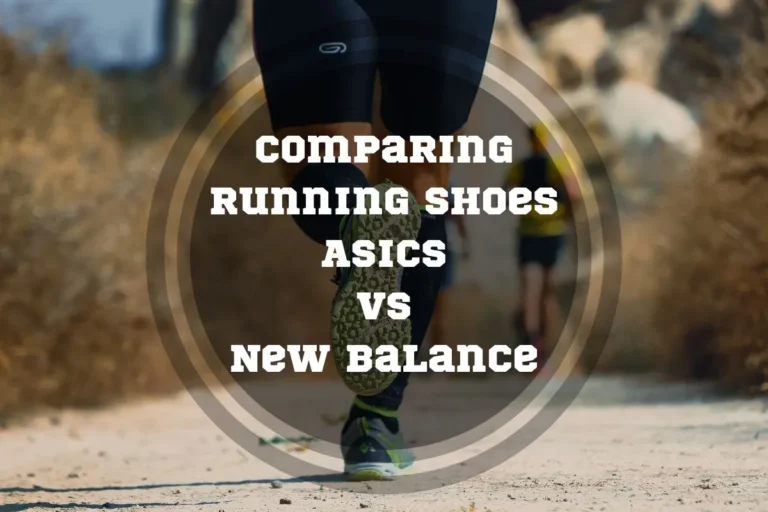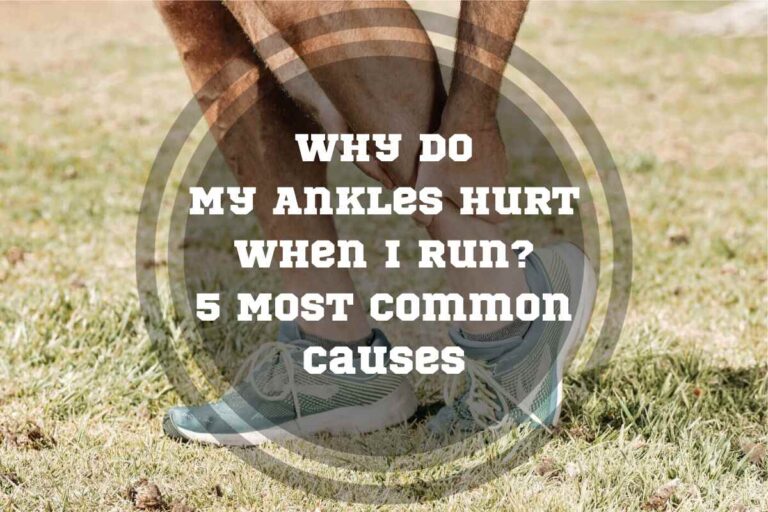Proper Running Foot Strike: 5 Pro Tips + 4 Useful Exercises
Running is an excellent way to stay fit and healthy. However, it’s essential to maintain proper form to avoid injuries and achieve optimal performance. Many people are unaware of the importance of a proper running foot strike. How your foot hits the ground can affect your overall running performance and can lead to injuries if not done correctly.
How should your foot land when running? This post will discuss the key aspects of proper foot strike to help you improve your running technique and avoid injuries. Stay with us to learn all the details!
Why is proper running foot strike technique important?
Proper running foot strike can help prevent injury and improve your overall performance. Aim to land on the middle of your foot, keeping your stride short and your cadence high. Remember to keep your knees slightly bent to absorb the shock of each step.
Anatomy of the Foot during Running
Running involves a complex interaction of muscles, joints, and bones, especially in the foot area. When the foot strikes the ground, the body must absorb the shock of the impact while maintaining stability and propulsion.
During a foot strike, the heel contacts the ground first, followed by the midfoot and forefoot. The arch of the foot flattens to absorb the force of the impact, then recoils to provide energy for the next step.
Several muscles are involved in this process, including the gastrocnemius, soleus, tibialis posterior, peroneals, and flexor hallucis longus. These muscles work together to control the motion of the foot and ankle, absorb shock, and generate propulsion.
The gastrocnemius and soleus muscles in the calf work to plantarflex the ankle and propel the body forward. Next, the tibialis posterior muscle, located on the inside of the lower leg, helps to control the foot and ankle’s motion and maintain the foot’s arch. The peroneal muscles, located on the outside of the lower leg, help stabilize the ankle and control the foot’s motion. And the flexor hallucis longus muscle, located in the foot, helps flex the big toe and maintain the foot arch.
Pro Tip:
Pay attention to the smallest details to prevent potential injuries caused by the significant vertical load during running.
Overall, the foot’s anatomy during running is a complex and coordinated process involving many different muscles and joints working together to provide stability and propulsion. Understanding this process can help runners improve their form and prevent injury.
5 Main Types of Foot Strike
There are five main types of foot strikes: heel strike, midfoot strike, forefoot strike, flat foot strike, and toe strike. Each type of foot strike has its benefits and drawbacks. Now let’s discuss when to use each type of foot strike while running and how to chose a proper running form feet.
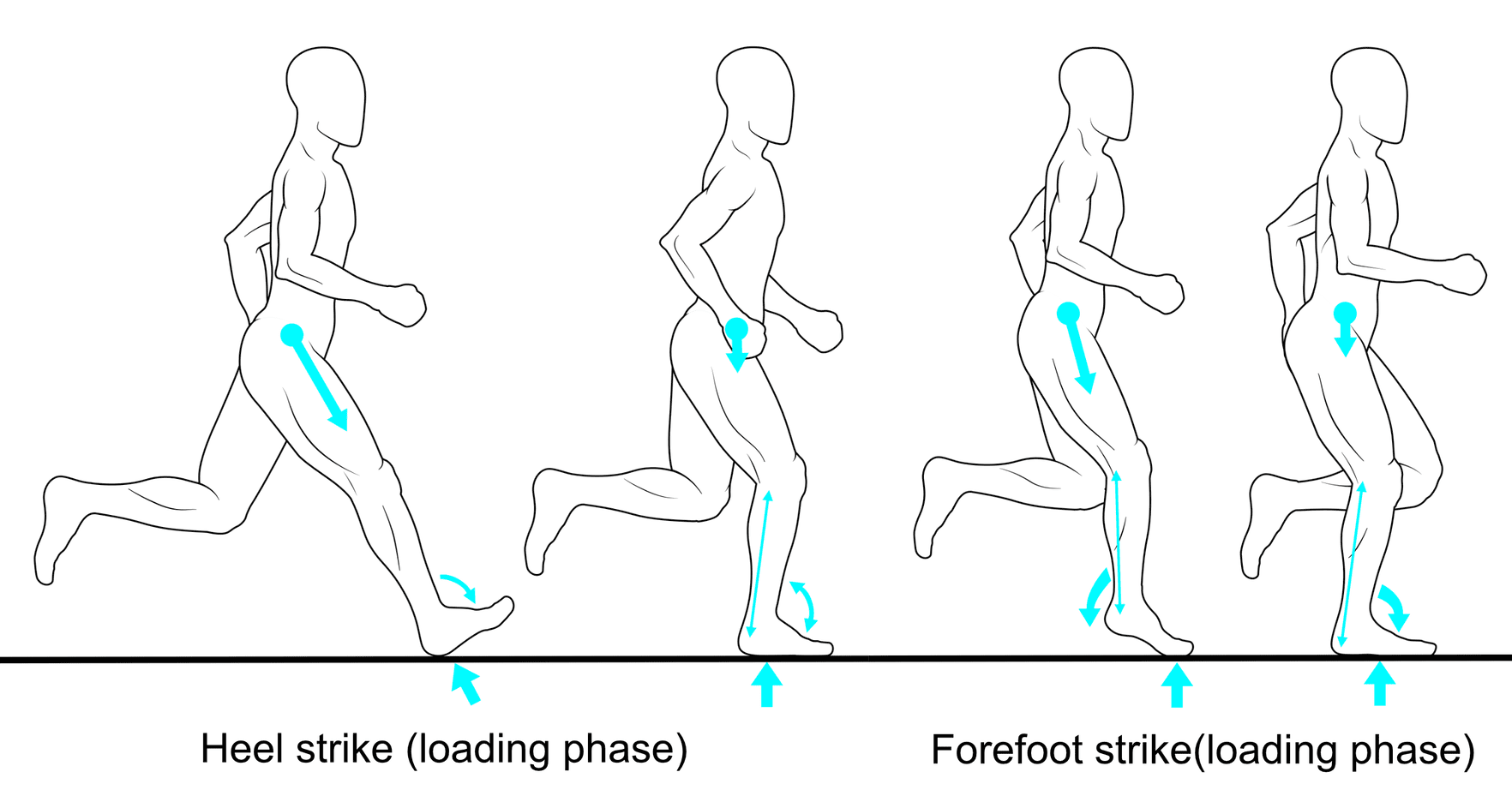
1. Heel Strike
A heel strike happens when your heel hits the ground first while running. This type of foot strike is the most common among runners but can also be the most harmful. Heel striking puts a lot of pressure on your joints and can lead to shin splints and knee pain. However, heel striking can be useful when running downhill or at slower speeds. It can help you control your speed and prevent you from going too fast when running downhill. Using heel strike can help you conserve energy and maintain your balance at slower speeds.
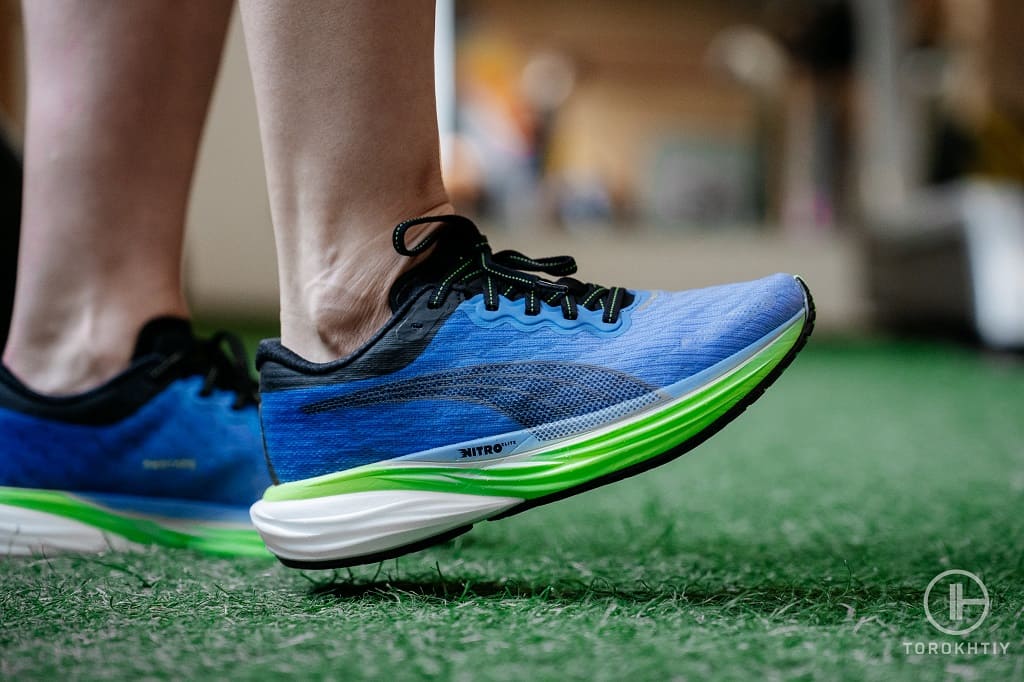
2. Midfoot Strike
A midfoot strike makes the middle of your foot first hit the ground while running. This type of foot strike is less common than a heel strike but can be more efficient. Midfoot striking helps to reduce the impact on your joints and can prevent injuries. Additionally, it can help you generate more power and speed when running. Using a midfoot strike is best when running on flat surfaces or at a moderate pace.
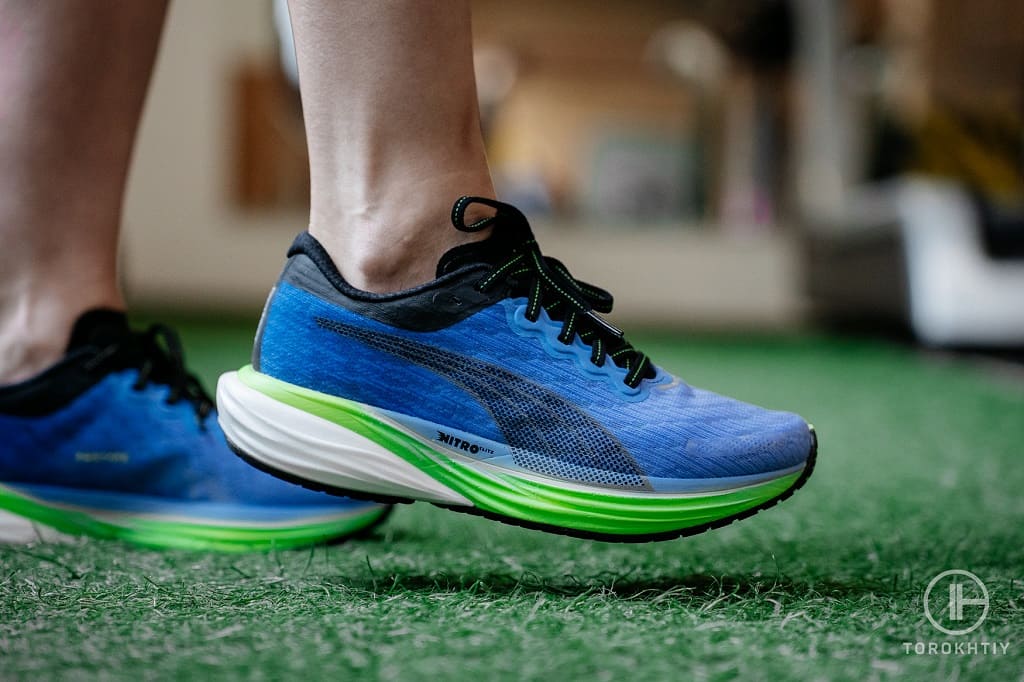
3. Forefoot Strike
A forefoot running is when the ball of your foot hits the ground first when you are running. This type of foot strike is the least common but can be the most efficient. Forefoot striking helps to reduce the impact on your joints even more than midfoot striking and can help prevent injuries. Additionally, forefoot striking can help you generate even more power and speed when running. It is best to use a forefoot strike when running at higher speeds or uphill.
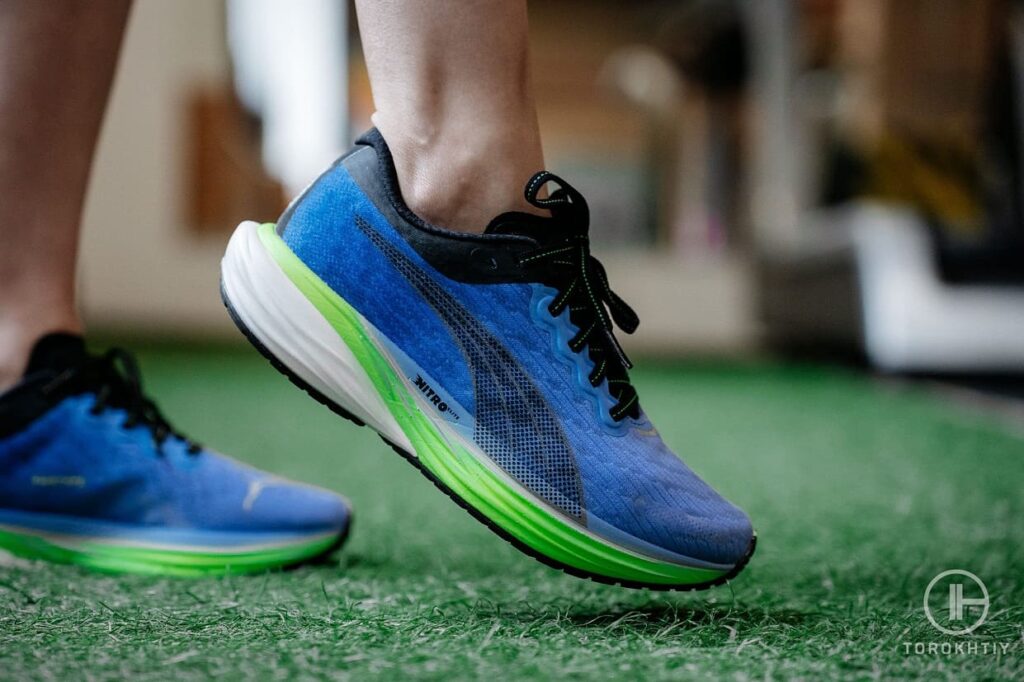
4. Flat Foot Strike
The flat foot strike makes the entire foot contact with the ground at the same time. Runners with a flat foot strike tend to have a longer stride and a slower cadence. This type of foot strike is not recommended as it can cause more impact on the feet and lower legs, leading to potential damages such as shin splints and plantar fasciitis.
5. Toe Strike
The toe strike is when the toes make contact with the ground first, followed by the rest of the foot. Running on toes is not recommended as it can put a lot of stress on the toes and cause injuries such as stress fractures. Runners with a toe strike also tend to have a shorter stride and a slower cadence.

Why Is Proper Foot Strike Important for Runners?
Runners need proper foot strike running to lower injury risk and perform better. Heel striking, the most common foot strike pattern, can lead to injuries such as shin splints, knee pain, and plantar fasciitis. This is because the heel absorbs the impact of the body’s weight, causing a sudden jolt to the lower leg.
On the other hand, midfoot striking results in a softer landing and less impact on the lower leg during a flat-surface running, while forefoot striking is safer for hill running and sprinting. This reduces the risk of injuries, especially for long-distance runners. Proper foot strike also helps improve running efficiency, stamina, and speed.
Pro Tip:
During running, aim to maintain a higher and longer contact with your foot, especially when running at faster speeds.
You should aim to have a midfoot or forefoot running according to your training goals to prevent damage and improve performance. It is important to gradually transition to a new foot strike pattern to avoid overuse injuries. Regular strength training exercises and proper running form can also help improve foot strikes and overall running technique.
5 Benefits of Proper Running Foot Strike
Here are the main benefits of a proper running foot strike.
1. Reduced Injury Risk
One of the most significant benefits of a proper running form foot strike is a reduced risk of injury. When you land on your midfoot or forefoot instead of your heel, you distribute the impact of each stride more evenly throughout your foot and leg. This reduces the stress on your joints and muscles, which can help prevent common running injuries such as shin splints and plantar fasciitis.
2. Improved Running Efficiency
Landing on your midfoot or forefoot allows you to use the natural spring-like properties of your foot and calf muscles, which can help you generate more power with each stride. This means you can cover more ground with less energy and improve your overall running routine. A proper foot strike can also improve running efficiency, allowing you to run faster and longer with less effort.
Subscribe to Our Running Newsletter!
Get free running tips from renowned professional athletes and discounts from top-notch brands.
3. Better Balance and Stability
A proper foot strike can also improve your balance and stability while running. When you land on your midfoot or forefoot, you engage the muscles in your feet and lower legs, which help stabilize your body and prevent excessive side-to-side movement. This can also help improve your running form and reduce the risk of tripping or falling.
4. Reduced Fatigue and Muscle Soreness
A proper foot strike can also help reduce fatigue and muscle soreness during and after running. When you land on your midfoot or forefoot, you use your foot and calf muscles to absorb the impact of each stride, which can help reduce the stress on your larger leg muscles. This can help you run longer and recover faster after each workout.
5. Improved Overall Foot Health
Finally, a proper foot strike can improve your overall foot health. When you land on your midfoot or forefoot, you engage the muscles in your feet and lower legs, which can help strengthen these muscles over time. This can help improve your foot arch and reduce the risk of common foot problems such as flat feet and plantar fasciitis.
How to Run Properly: Correct Technique and Tips
The first step in improving your technique is to understand whether you are running correctly.
Pro Tip:
While speed is important, ensure you maintain proper running technique to minimize the risk of injury, regardless of the distance you’re running.
Here are some signs that you may be running incorrectly:
- Your feet are landing heavily and loudly on the ground.
- Your feet are landing in front of your body.
- The upper body is leaning too far forward or backward.
- You feel the tension in your shoulders.
- Your arms are swinging across your body.
If you experience any of these signs, you may need to fix your running skills.
Changing Your Foot Strike
If you want to change your foot strike, it’s important to do it gradually. Trying to change your foot strike quickly can lead to injuries, so be patient and take your time. Here are some tips to help you change your foot strike and learn how to run properly feet placing:
- Start by running on a soft surface like grass or a treadmill.
- Focus on landing softly and quietly rather than with a heavy thud.
- Shorten your stride and increase your cadence (the number of steps you take per minute).
- Try to land on the middle of your foot rather than your heel or forefoot.
- Strengthen your feet and ankles with calf raises and ankle circles.
Benefits of Changing Your Foot Strike
Changing your foot strike can have numerous benefits, including:
- Reducing your risk of injury, especially in the knees and shins.
- Improving your running efficiency and speed.
- Helping you to maintain good posture and form.
- Allowing you to run longer distances without getting tired.
When you are running with a midfoot strike, your foot should land underneath your body or slightly in front of you. However, you need to transfer the center of your body’s gravity when your foot is directly under your body. This will help you maintain proper alignment and reduce the impact on your joints. Your foot should also be relaxed, and your toes should be lightly touching the ground.
Changing your foot strike can be challenging, but patience and persistence can greatly improve your running technique and reduce your risk of injury. Remember to start slowly and gradually, and don’t be afraid to seek advice from a professional running coach or physical therapist if you’re struggling.
4 Exercises to Improve Foot Placement While Running
One way to improve running technique is through special exercises that simulate individual phases of a running step. This helps to teach the nervous system and body the correct running technique. Here are the main exercises to try:
1. High knees
High knees help to improve knee lift and stride frequency. To do this exercise, stand in place and jog on the spot, lifting your knees as high as possible. Aim to lift your knees above your hips and use your core to control the movement.

2. Butt kicks
Butt kicks help to improve hamstring flexibility and increase stride length. To do this exercise, stand in and jog on the spot, kicking your heels toward your glutes. Aim to get your heels as close to your butt as possible and use your core to control the movement.
3. Skipping
Skipping helps to improve calf strength and explosiveness. To do this exercise, skip forward, focusing on pushing off the balls of your feet and using your calf muscles to propel yourself forward.
4. Quick feet
Quick feet exercise helps to improve foot speed and coordination. To do this exercise, stand in place and quickly alternate, tapping your feet on the ground as fast as possible. Aim to keep your feet light and quick.
5 Tips to Improve Foot Placement While Running
Once you master the correct foot placement technique, you should pay attention to these tips which help you to gain even better results.
1. Focus on Landing on the Midfoot
Many runners land on their heels, which can cause unnecessary stress on the lower legs. To improve your foot placement, focus on landing on your midfoot instead. This will help distribute the impact of each stride more evenly across your feet.
2. Shorten Your Stride
Focus on taking shorter, quicker strides to help you land on your midfoot. Taking shorter strides can also help improve your foot placement. When you take long strides, you are more likely to land on your heel, which can lead to damage.
3. Engage Your Core Muscles
Your core muscles play a vital role in maintaining proper foot placement while running. Engage your core by pulling your belly button towards your spine. This will help you maintain an upright posture and distribute your weight more evenly.
4. Wear Proper Running Shoes
Wearing the right shoes can also help improve your foot placement while running. Look for shoes with good arch support and cushioning to help distribute the impact of each stride.
5. Practice Makes Perfect
Improving your foot placement while running takes time and practice. Focus on implementing these tips during each run, and you will start to notice improvements in your foot placement over time.
Frequently Asked Questions About Proper Running Foot Strike
How Do Shoes Affect My Foot Strike?
Your shoes can impact your foot strike and the way you run. Choosing shoes that support your natural foot strike and provide adequate cushioning and stability is important. Running shoes with thick soles and high heels can encourage a heel strike, while minimalist shoes can promote a forefoot or midfoot strike.
What Should I Do if I Feel Pain in the Forefoot While Running?
If you’re experiencing pain in the forefoot while running, you may need to adjust your shoes or running style. Try switching to shoes with more cushioning or adjusting your stride to land with a midfoot strike instead of on your toes. If pain persists, consider seeking advice from a medical professional.
Which Is Better: Heel Strike vs. Forefoot Strike Running?
Many runners have different opinions on whether a heel strike or forefoot strike is better. While heel striking is common, forefoot striking has become more popular in recent years. Some believe that forefoot striking reduces the risk of injury, while others argue that heel striking is more efficient. Ultimately, the best approach may depend on individual factors such as running goals and biomechanics.
How to Run Lighter on Your Feet?
Running can be tough on your feet and joints, but there are ways to make it easier. Start by focusing on your form – lean forward slightly, keep your feet low on the ground, and take shorter strides with midfoot strikes. Wearing lightweight shoes and practicing plyometric exercises can also help you become lighter on your feet.
Final Thoughts on Proper Running Foot Strike
In conclusion, a proper running foot strike is essential for injury prevention and improved performance. By landing on your midfoot or forefoot, you can reduce your risk of damage, improve your running efficiency, and enhance your overall foot health.
Understanding whether you are running correctly, changing your technique, and paying attention to your foot strike are important steps. Remember to start slow and gradually build up your pace and distance. So, the next time you hit the pavement, pay attention to your foot strike and see the benefits for yourself! With time and practice, you can become a better runner and enjoy the many benefits of running.
What running foot strike do you prefer? Feel free to ask any questions in the comments below.
Also read:
- Does Running Make You Taller
- Average 200 Meter Time
- Carb Loading for Half Marathon
- What to Eat After a Half Marathon
- Running on Grass vs Concrete
- Eat Banana Before Run
- Best Beach Running Shoes
References:
- Foot strike patterns and ground contact times during high-calibre middle-distance races // Taylor & Francis: https://www.tandfonline.com/doi/abs/10.1080/02640414.2012.707326
- Foot strike patterns of recreational and sub-elite runners in a long-distance road race // Taylor & Francis: https://www.tandfonline.com/doi/abs/10.1080/02640414.2011.610347
- Foot Strike and Injury Rates in Endurance Runners A Retrospective Study // Medicine & Science in Sports & Exercise: https://journals.lww.com/acsm-msse/Fulltext/2012/07000/Foot_Strike_and_Injury_Rates_in_Endurance_Runners_.17.aspx
- Metabolic and mechanical aspects of foot landing type, forefoot and rearfoot strike, in human running // Wiley Online Library: https://onlinelibrary.wiley.com/doi/10.1111/j.1748-1716.1995.tb09943.x
- The Relationship of Foot Strike Pattern, Shoe Type, and Performance in a 50-km Trail Race // JSCR: https://journals.lww.com/nsca-jscr/Fulltext/2016/06000/The_Relationship_of_Foot_Strike_Pattern,_Shoe.19.aspx
- Effects of Footwear and Strike Type on Running Economy // Medicine & Science in Sports & Exercise: https://journals.lww.com/acsm-msse/Fulltext/2012/07000/Effects_of_Footwear_and_Strike_Type_on_Running.18.aspx
If you have any questions or suggestions, you can contact us via email – [email protected]

